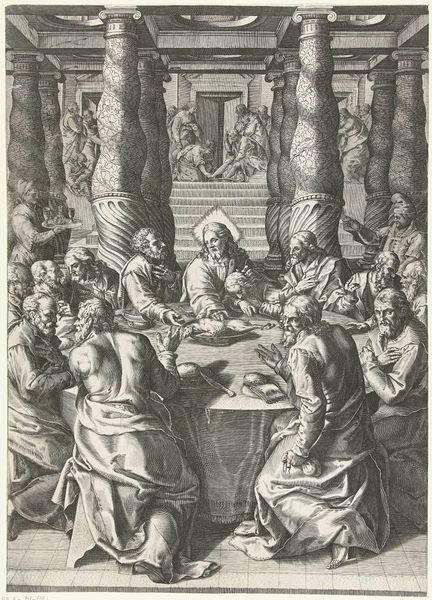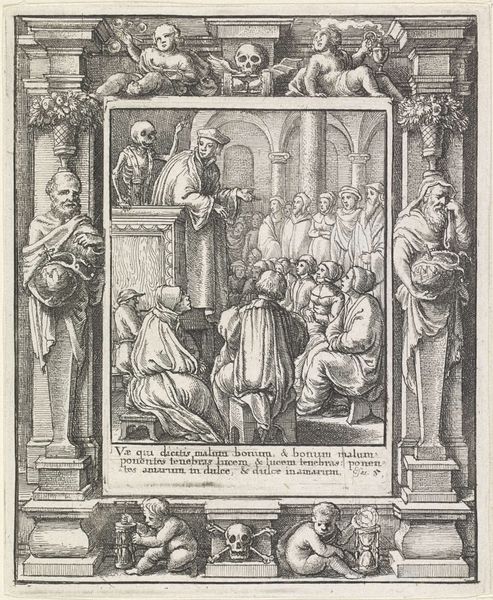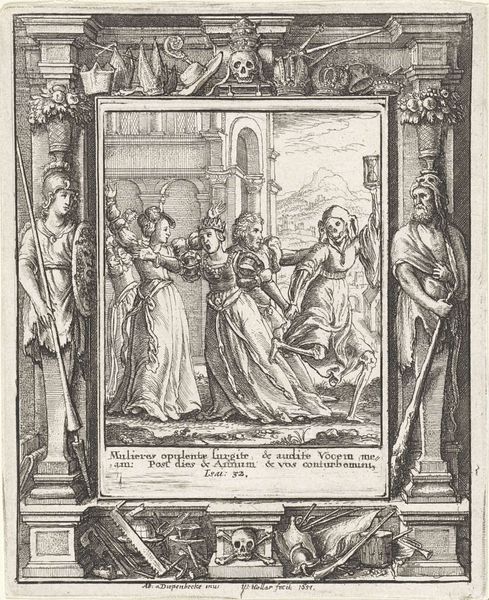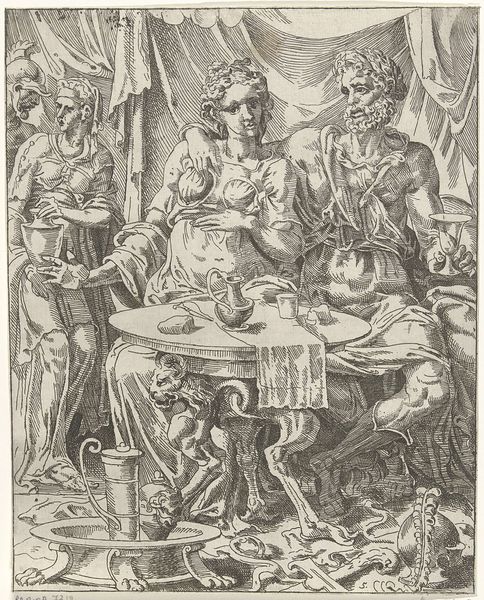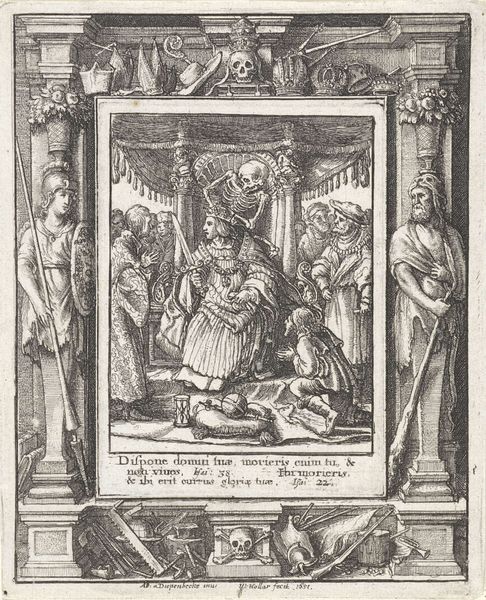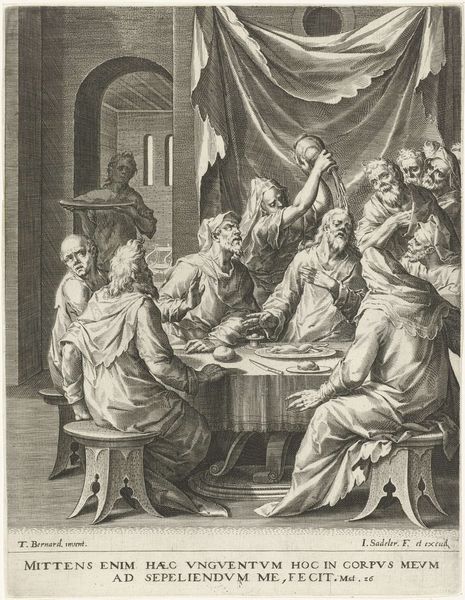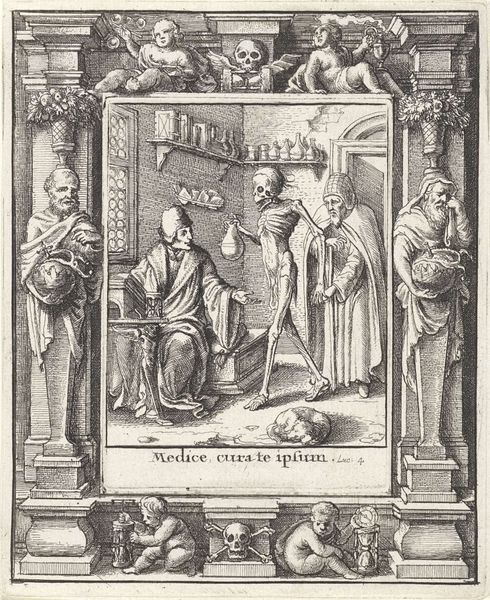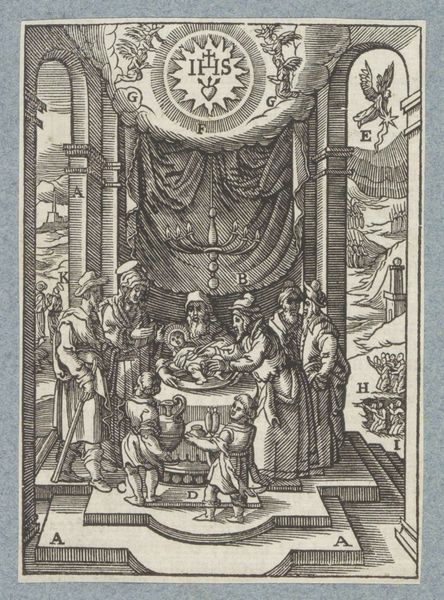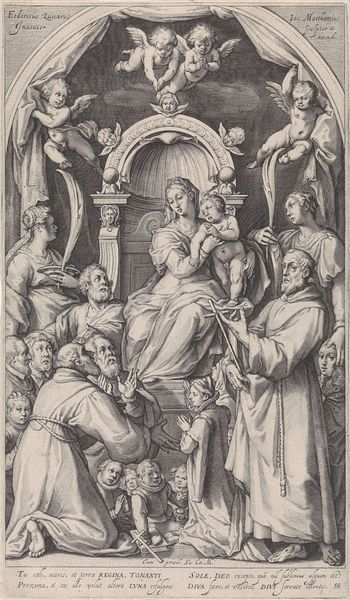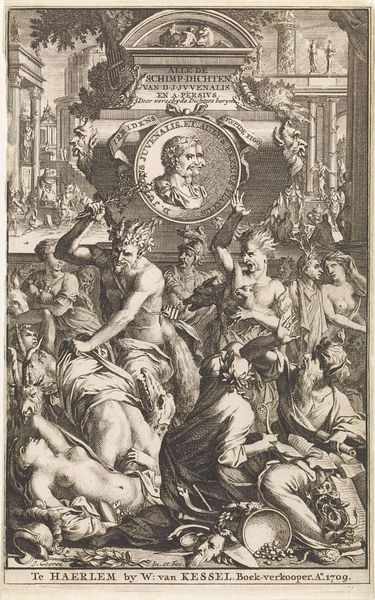
drawing, print, ink, engraving
#
drawing
#
narrative-art
#
baroque
#
pen drawing
# print
#
pen illustration
#
figuration
#
ink
#
history-painting
#
engraving
#
sword
Dimensions: height 444 mm, width 293 mm
Copyright: Rijks Museum: Open Domain
Editor: This engraving, "The Nativity" by Jacob Matham, created in 1604, shows the birth of Christ with Saint Peter and Paul in the foreground. I'm immediately struck by how detailed and almost theatrical the composition feels, it seems like a stage production frozen in ink. What strikes you when you look at it? Curator: What stands out to me is the intricate layering of symbols of production. Note the raw materials: ink and paper, manipulated through the highly skilled labor of the engraver Matham. This print was made not only as a devotional image but for wide distribution. The very act of creating multiple copies makes it part of a market economy, impacting how viewers experienced religion in 17th-century Europe. Editor: So, the meaning isn't just in the image itself, but also in its production and distribution? Curator: Precisely. The physical labor of crafting these lines, the socio-economic context of its creation, and the materials used, all contribute to our understanding. Notice how the very display case it resides in performs a role, its setting reinforcing this 'art's' worth. The cost of acquisition, upkeep; even our audio guide production all play roles! What do you make of this framing within a frame? Editor: That’s a good point! The main scene is also presented as an image within a larger, ornamental structure. It brings more attention to the conditions of how art is seen. Thanks to this new perspective, I see now it's not only the art that creates history, it’s the circumstances that allow us to contemplate on the production and accessibility of this piece, like here, today. Curator: Precisely! Considering how artworks participate in economies and cultural creation gives depth to our understanding.
Comments
No comments
Be the first to comment and join the conversation on the ultimate creative platform.
